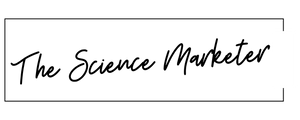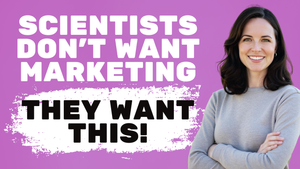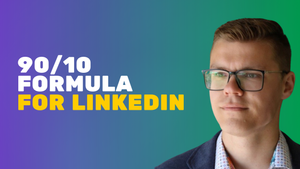🎧 Listen to this episode:
🔔 Subscribe to the podcast
🎥 Watch it on YouTube
📖 Or read the summary of the interview:
In science marketing, few words are used as often — and as vaguely — as “community.” Every company wants one. Every campaign claims to build one. Yet few truly understand what it means to create a space where scientists gather not out of obligation, but out of genuine connection.
For Susanna Harris, Director of Platform at Breakout Ventures, community isn’t a tactic or a content strategy — it’s a basic human need. Her journey from an isolated PhD student to a leader in community-driven venture capital offers rare clarity on how to turn that need into a powerful force for science-driven companies.
From isolation to belonging: building PhD Balance
When Susanna began her PhD in microbiology, she thought she’d found her people — the kind of curious minds who would share her excitement for bacteria and petri dishes. But the further she went, the more she realized that academia, despite its intellectual density, could be profoundly lonely.
“We can’t really get all of our needs met unless there are other people around us who have similar goals, who aspire to the same things, who hold each other in esteem,” she told me.
That loneliness led her to start an Instagram experiment she called PhD Balance. It wasn’t a brand or an initiative, just a personal outlet where she posted about her struggles with anxiety and depression in graduate school. “It didn’t start as a community, it just started as storytelling,” she said. “I went onto Instagram and said, here’s the image you see on Instagram, and here’s a 2,000-character background of the things that I don’t really talk about.”
What happened next reveals something essential about how communities grow. One person responded, then another, each sharing their own story of mental health challenges in science. Within months, the account became a hub for thousands of graduate students around the world. Susanna hadn’t built a community through outreach or marketing; she had simply created a space for honesty, and people filled it.
Over time, it became clear that PhD Balance wasn’t about her anymore. “That’s sort of the definition to me of community,” she reflected. “You don’t have a central hub. You create a system where the center keeps putting out energy and provides that base alignment, but then you have all these little pockets and nodes that form.”
That shift — from personal expression to collective identity — is where every true community begins. It’s not when people notice you. It’s when they start noticing each other.
The science of connection
Years later, Susanna brought that same instinct into her role at Breakout Ventures, a biotech venture capital firm that invests in early-stage startups. Her job, as she describes it, is to “create the community that surrounds science founders: the investors, corporate partners, and mentors who can help them succeed.”
It’s an unusual position, but one she approaches with the precision of a scientist. In fact, her PhD research on microbial communities helped her think about human ones.
“I looked at how bacterial communities work together to stick to plant roots,” she said. “If you can find the right buddy bacteria, they will stick to the plant and cause the effect you want. I think about that with human communities.”
The metaphor is striking. In her view, the startup founders are the bacteria, the companies are the plants, and the community is the ecosystem that enables them to flourish. If you get the right mix of “buddy bacteria” — in this case, investors, partners, and supporters — you trigger a cascade of beneficial effects.
For marketers in science, the lesson is powerful: communities are not audiences. They are ecosystems. The role of a marketer is not to broadcast, but to cultivate the right conditions for growth, to find the “helper species” that amplify one another’s success.
Why most companies get community wrong
When I asked Susanna about common mistakes she sees in community-building, she didn’t hesitate.
“The biggest mistake I see people make is seeing their community as an audience,” she said. “The whole point is not how do we make them think about us constantly. Honestly, that’s just not interesting.”
That insight may sting for marketers accustomed to tracking attention rather than alignment. But Susanna's point is practical, not philosophical: people don’t gather around companies, they gather around shared problems. If your brand happens to facilitate those interactions, you become valuable. If not, you’re just noise.
“The second mistake,” she added, “is not thinking about the value. What problem is your community solving? Depending on the value of that product to solving their problems, that’s going to determine everything about how important this community becomes to them.”
The takeaway is that community-building begins with empathy. Before designing a Slack group, a webinar series, or a conference booth, ask yourself: what are these people trying to achieve, and what stands in their way? For scientists, that often means finding collaborators, accessing mentorship, or feeling less alone in their pursuit of discovery. The most successful scientific communities, online or offline, exist to remove those barriers.
Designing communities for authenticity
That clarity of purpose also helps avoid the most corrosive challenge in science communication: distrust. Scientists are naturally skeptical, and rightly so. They are trained to question motives and methodology alike.
“When you start thinking about building businesses and you throw money into the mix,” Susanna said, “there is a reaction of ‘who’s benefiting from this thing?’… People are really smart, especially in these industries.”
Instead of pretending neutrality, she advocates transparency. If your company benefits from the community’s success, say so. If you’re curating a group to help potential customers succeed, make that clear. The issue is not that marketing exists, it’s that manipulation does. Honesty is what keeps a scientific audience from feeling used.
And being selective matters too. “You have to be really clear in what you are trying to do and the people that you’re trying to attract,” Susanna said. “You don’t need to boil the ocean. If you can attract 50 of the right people, that’s going to be so much better than 10,000 who are not on the same page.”
For marketers used to measuring community size, this is a radical but liberating idea. The goal isn’t to grow endlessly, but to attract the people who share the same rhythm. The wrong participants can fracture a community faster than a lack of engagement ever could.
Measuring what actually matters
Metrics are another area where Susanna sees misalignment between marketing and community-building. “You can’t figure out how to keep the engagement going unless you know where it’s slowing down,” she said. That means moving beyond vanity indicators like follower counts or webinar attendance, and instead looking for evidence of real relationships forming.
“Can you figure out how many of the people who showed up to that event connected with each other afterwards?” she asked. “Were you seeing people exchanging business cards or LinkedIn?”
In practice, that means looking for momentum, not motion. Engagement isn’t about how many people react to your post; it’s about whether they keep talking after the event ends. Susanna even suggests checking in personally with members who disengage: “Call them and say, ‘Hey, you used to come to our stuff all the time. We miss you. What’s going on?’”
This human touch turns analytics into empathy. As she put it, “Everyone likes to be listened to and taken seriously. If you come from that open aspect of just saying, ‘You’re really valuable to us,’ very few people react badly to that.”
The best channels for reaching scientists
When the conversation turned to channels, Susanna didn’t name any shiny new platform. Instead, she emphasized control. “Anything that you have the most control over,” she said. “The area you have the most control over is your website… The next thing that’s really good is LinkedIn.”
In an era where algorithms shape visibility overnight, her advice is refreshingly grounded. A company’s website and mailing list remain its most durable assets. They are places where you can define your own narrative and measure your own impact. Social platforms can help extend reach, but they should never be the foundation.
Susanna views LinkedIn as the best space for scientists and entrepreneurs to meet halfway between professionalism and authenticity. “It’s a great platform for people getting started if they are nervous about sharing their opinions,” she said. “You might want to hold things back a little more, but things don’t go weirdly viral on LinkedIn. People are much less likely to chew you out and make you feel bad.”
Still, she admits LinkedIn can feel synthetic. That’s why pairing it with owned channels, such as newsletters or email lists, is essential. In my own experience, I told her, newsletters remain the most reliable form of community because they foster direct, permission-based connections. She agreed: “If someone is reading your emails, if they’re creating space to actually open them, that means a lot these days.”
The exchange underscored an important truth: digital community-building isn’t about being everywhere, it’s about being present where you have meaning.
Understanding what motivates scientists
If there was one myth Susana wanted to dispel, it was the idea that scientists are bad communicators or too introverted for community-building. “It’s horrifying to me how many people have felt comfortable saying, ‘Scientists are so bad at communicating,’” she said. “Scientists communicate their work more than almost any other sector I know.”
The difference, she argued, lies not in skill but in motivation. Scientists communicate for purpose, not performance. They share when the topic matters, not when the algorithm demands it. That’s why marketers who approach them with sales pitches often fail, while those who show genuine curiosity succeed.
“Don’t assume you know their motivations,” Susanna advised. “Scientists are just really excited about stuff. Find out what they nerd out about and you’re sold.”
At the heart of Susanna's philosophy is a fascination with what drives human behavior. Her favorite book on the subject is Don’t Shoot the Dog by Karen Pryor, a guide to reinforcement and motivation written by an animal trainer.
“It’s actually about human training,” she said. “If every time I sit down to do my emails, I check off a box and when I get ten boxes I buy myself something nice, I’m probably going to be more excited about checking my emails. We’re kind of simple; we’re not that surprising.”
Behind the humor is a serious point: successful communities, like successful habits, are built on reinforcement. Recognition, reciprocity, and small rewards make participation feel natural. You don’t need grand gestures, just consistent signals that show people their contributions matter.
The bigger picture for science marketers
As the conversation drew to a close, one theme emerged again and again: community is not a marketing strategy; it’s an act of empathy. When you strip away the social media tools and the metrics, what’s left is something timeless and a desire to belong and to be understood.
“A community becomes really successful when you can step out as the center,” Susanna said. “If you take a vacation, it doesn’t fall apart.”
That statement could serve as the manifesto for every science communicator trying to balance authenticity and ambition. The more you let others take ownership, the stronger the collective becomes.
In an age when engagement often feels transactional, Susanna's approach is a call to return to first principles and to treat communities not as a funnel but as a forum, not as a brand asset but as a living ecosystem.
Because when scientists feel truly seen, they don’t just engage, they also create, collaborate, and lead. And that’s when community stops being a word on a marketing plan and becomes something far more powerful: a shared sense of purpose.



![Maximizing your conference impact with LinkedIn: A step-by-step guide [with post templates]](https://images.unsplash.com/photo-1512736912-cd9db1d90b72?crop=entropy&cs=tinysrgb&fit=max&fm=jpg&ixid=M3wxMTc3M3wwfDF8c2VhcmNofDY2fHxjb25mZXJlbmNlJTIwaGFsbHxlbnwwfHx8fDE3Mzc1NDA4OTd8MA&ixlib=rb-4.0.3&q=80&w=300)


